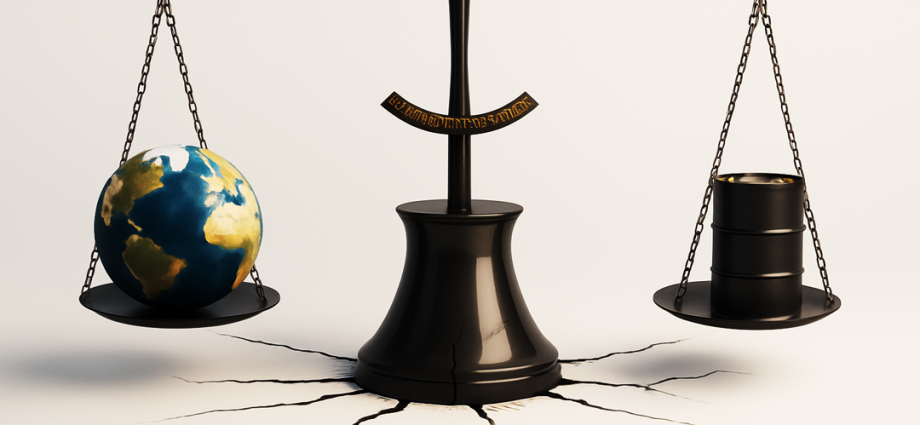In Technical Bulletin 93, WearCheck diagnostician Rivendren Wayne Moodley, highlights the extreme extent to which human life is currently intertwined with crude oil, and the alarming consequences that could evolve, when the wells run dry and suitable alternatives are not in place. This is part 2 of his Crude Awakening series.
‘Crude oil is far more than fuel; it’s the elemental substrate of modern civilisation. At 104 million barrels consumed daily, it generates 110 million tonnes of polyethylene and 1.5 billion tonnes of asphalt. Through fluid catalytic cracking and steam reforming, long hydrocarbon chains break into olefins, ethylene and propylene, essential for polyethylene and polypropylene, cornerstones in packaging, textiles, electronics, and construction.
This conversion powers vast networks: paraxylene yields PET fibres, making up over 60% of global apparel, while acrylonitrile and adipic acid form acrylics and nylon for performance fabrics. Mineral oils, petrolatum, and propylene glycol, refined via vacuum distillation and hydration, are key to pharmaceutical carriers, emollients, and personal care goods.
Petroleum’s reach extends silently: microchips depend on solvent-based etching, HVAC systems require oil-based coolants, and electrical grids rely on petrochemical insulation. Vehicles and furniture utilise oil-derived synthetic rubber, foams, and thermoplastics. Food packaging preserves freshness via oil-born polymers and non-stick coatings, while screens and lighting continue the petrochemical legacy after dusk.
From mattresses to highways, oil supports daily life. It drives textile strength, tyre elasticity, and circuit conductivity. Crude doesn’t just energise, it engineers modernity’s molecular architecture. Its disappearance wouldn’t disrupt; it would dismantle.
Petroleum’s Molecular Mastery
Petroleum operates as a thermochemical backbone across mechanical, pharmaceutical, infrastructural, and consumer systems. In 2022, R4.5 trillion was invested into refining infrastructure. Processes like catalytic cracking (480–550 °C) and steam reforming (800 °C+) produce olefins for plastics, over 400 million tonnes per year. PET fibres from paraxylene and ethylene glycol at 260 °C dominate textile production. Nylon and acrylics from adipic acid, hexamethylenediamine, and acrylonitrile comprise 60%+ of clothing globally.
Lubricants that are hydrocracked from heavy gas oils under 80–120 bar make up 90% of the 40 million tonne market, supporting engines, hydraulics, and turbines. Petroleum distillates such as petrolatum and paraffin bolster topical creams, wound-care, and injections, anchoring a $25 billion pharma sector.
Polymers and antioxidants from oil preserve food and stabilise cookware and cosmetics. Bitumen supports 100 million tonnes of road surfacing. Butadiene and styrene form the rubber sustaining tyres and seals. Xylene and isopropanol are key to semiconductor fabrication.
Petroleum’s invisible mastery isn’t just energy, it’s molecular magic. Its absence would trigger a systemic domino collapse.
The Slow Collapse of Oil
By the 2040s, fuel prices may exceed R300/litre, refineries stall, and extraction shifts to marginal fields. Petrochemical supply chains may fracture. Maritime logistics and plastics production, cornerstones of commerce, falter. Electric alternatives fail to replace embedded oil in polymers, lubricants, and infrastructure.
In the 2060s, major industries may unravel. Packaging disappears, electronics fail, food spoils without oil-based preservatives or fertilisers. Semiconductor production halts. Hospitals struggle without petrochemical carriers and synthetic polymers. Solar and wind infrastructure may corrode without oil-derived resins.
By the 2070s, geopolitics may destabilise. Petrostates weaponise the dwindling supply. Fuel replaces currency. Grids fail as lubricated turbines and insulated transformers deteriorate.
By 2080, oil extinction leads to terminal collapse. Vehicles rust; roads crumble. Synthetic fuel efforts may spark fatal methanol explosions. Death tolls may exceed 3 billion due to famine, disease, and collapse. Petrochemical-dependent freight ceases, and semiconductor fabrication vanishes.
With no substitute for oil’s diversity and molecular versatility, the world faces regression. Its end may not come in a sudden fire, but in a slow, painful, suffocating silence. The machines stall, cities darken, comforts fade and life as we know it is irreversibly altered.
This is no mere Technical Bulletin; it’s a prophetic dissection of a world that dared to build everything on oil… and forgot to look beyond it. Now one question remains: will we act before this vision becomes reality?’
This is a summary – to view the full article, please click here: WearCheck Technical Bulletin 93















